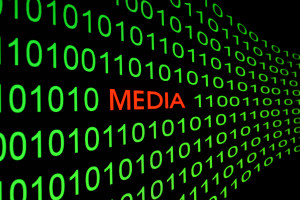By Maury Tobin
Many of you may not know that I started my career in politics. My first gigs included organizing student events for the nonprofit, The Washington Center, at the 1992 Democratic and Republican national conventions, and at the 1993 inauguration. I remember massive media rooms, bulky computers, and outreach that consisted of phone calls, faxes, press releases and simple emails. There was a lot of adrenaline.

It was clear then that broadcast and print ruled. But I couldn’t prophesize how many powerful princes would follow, forcing these monarchs to rethink their business models, which, in turn, would also influence PR and marketing.
Indeed, real-time technologies and PR had yet to intersect in the way they do today. The information world had yet to really open up to this ever-increasing kaleidoscope of how to make an impression.
In 1996, I started TCI by concentrating on Radio Media Tours (RMTs). Now, my work also includes email marketing and writing, managing integrated campaigns, public affairs and grassroots education, and producing and distributing audio and video podcasts. This week, I traveled to St. Louis to help conduct interviews and shoot footage for a video campaign for a national trade group promoting its accomplishments in 2012.
Radio provided me with the background to understand how various audiences, and media professionals, access and use information, but it also made me think about being an early “adopter and adapter,” versus a PR professional merely reacting to trends.
I’ve learned a lot since the ’90s. Because I believe this is the most significant era of media consumerism to date, I want to share with you some observations.
1. Podcasts are revitalizing interview, storytelling and communication models.
2. High Definition (HD) and internet radio are re-energizing the radio industry.
It’s Not Your Mama’s Multimedia Anymore
There is no question that unique and credible content triggers public interest and people are accessing information in fresh ways. This is turning savvy communication professionals into information pioneers and the public into gadget “geeks” and miners of information and entertainment.
“The Podcast Consumer 2012,” for instance, reveals that “one in four podcast consumers plug their MP3 players or smartphones into their car audio system nearly every day.”
3. Additionally, eMarketer predicted several years ago that the total U.S. podcast audience would reach 65 million in 2012. Findings from Edison Research and Arbitron last year showed that 29 percent of Americans have listened to an audio podcast and 26 percent of Americans (12 and over) have viewed a video podcast.
Multimedia content production and usage is on the rise. This has become increasingly evident through the work I do with national clients and trade groups, as well as for small nonprofits I help on a pro-bono level as part of my interest in community building and public service.
4. Today, an interview (radio or podcast) with an organization’s spokesperson can be used in multiple ways and on multiple platforms: internal reports, campaign/digital wrap-ups, client website features, in email newsletters, and on social media such as Facebook and Twitter. This maximizes our clients’ budgets.
The Place of Radio in the Multimedia Mix
It’s clear that the radio of our parents’ heyday isn’t the radio of today. Plug-in devices, HD and internet radio, Wi-Fi (radio waves provide wireless high-speed internet and network connections) and streamlined programming redefine what radio means and how it’s used.
5. While some continue to forecast the end of radio, the facts just don’t bear this out. The Federal Communications Commission (FCC) tallied 13,120 licensed AM and FM radio stations as of Dec. 31, 2001, and 14,952 as of Dec. 31, 2011.
A Pew Research Center survey of 2,251 adults conducted in January 2011 showed that 51 percent of adults use radio – broadcast and/or web – at least once a week for local information. [Source: The Washington Post]
6. I never discount the power of radio because I realize that because America is a nation of commuters and information seekers, radio remains one of the primary ways people access news, weather, educational programming and talk-show formats, and also learn about public-awareness efforts. Nearly 93 percent of consumers aged 12 and older listen to radio each week, according to Arbitron.
Radio is still an important media outlet, especially when the message and campaign require grassroots execution, social marketing and locally-honed information. I certainly understand the appeal of social media, but the reality is that good communications requires a mix of strategies.
7. The takeaway is that companies and organizations can no longer solely view communications and content creation as brand enhancers. Good content and PR have become the brand.
The Dog Days Are Over
While walking my three dogs, I listen to my favorite radio shows on my iPhone either via podcast or through streaming audio. I now pick the place and time I want to hear these programs. I also fully understand how this handy, small device fits into my life and allows me to both multitask and be ever-present.
Smartphones and internet and (HD) radio are redefining what radio is because they’re changing how people learn, become part of a larger dialogue, make decisions, and find information that impacts their work, lives, choices and the family and social structures of which they are a part.
8. Radio is still a highly engaging, cost-effective and personal medium that is regionally significant, but now it’s also more portable and customizable.
But don’t just take my word for it. Consider what Digital Syndicate Network (DSN) News reported about HD Radio after the 2012 International Consumer Electronics Show in Las Vegas: “These units (HD radio receivers) are also picking up steam as automobile makers are including them in new models, and standalone versions. This new concept takes a bite out of the satellite radio edge, and brings things back into the hands of local broadcasters.”
Here are some final facts to consider when you’re planning your next PR/marketing project and thinking about multimedia:
• “Eight-four percent of (business-to-business) marketers say content production is on the rise.” [Source: B2B Content Marketing Trends 2012 Survey, sponsored by Optify]
• “Video in email marketing has been shown to increase click-through rates by over 96%. In response, the number of marketers planning to use video in email campaigns has increased 5x (times) since the beginning of 2009. — Implix 2010 Email Marketing Trends Survey” [Source: http://ebayinkblog.com]
• “Time spent on mobile apps and the mobile web account for 63 percent of the year-over-year growth in overall time spent using social media. Forty-six percent of social media users say they use their smartphone to access social media.” [Source: Nielsen Social Media Report 2012]
Maury Tobin is the president of Tobin Communications, Inc., a firm he founded in 1996 that provides integrated campaign and digital services. Tobin earned both a Bachelor of Arts Degree in Interdisciplinary Studies and a Master’s Degree in Public Communication at American University.
